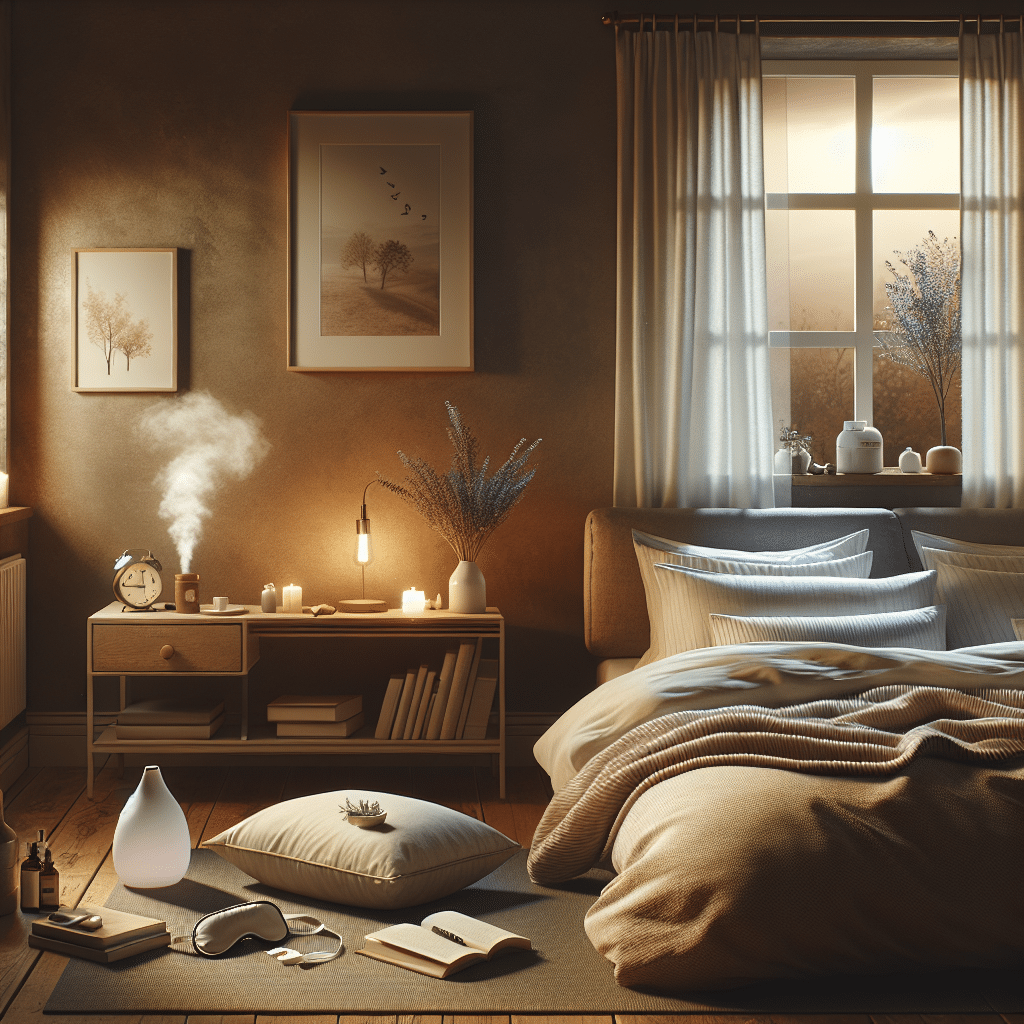Optimize Your Sleep Environment for Restful Nights
Achieving a comfortable sleep environment is crucial for enhancing sleep quality. Here are essential tips to create your ideal sleeping space.
1. Set the Ideal Temperature
The ideal bedroom temperature for sleep typically falls between 60°F to 67°F (15°C to 20°C). Cooler temperatures help lower your body’s core temperature, signaling that it’s time to sleep. Use a thermostat or a fan to maintain a consistent climate, and adjust your bedding according to seasonal changes.
2. Invest in Quality Bedding
High-quality mattresses and pillows are vital for support and comfort. Test different types of mattresses—memory foam, hybrid, or innerspring—to find the one that best suits your sleeping style (back, side, or stomach). In addition, opt for supportive pillows that keep your neck aligned with your spine, reducing strain and enhancing comfort.
3. Choose the Right Lighting
Lighting plays a significant role in setting the mood for sleep. Consider blackout curtains to eliminate outside light sources. Use dimmable lights or lamps that allow you to control the brightness as bedtime approaches. Blue light emitted from screens can interfere with melatonin production, so aim to turn off electronics at least an hour before bed.
4. Minimize Noise Pollution
Noise can significantly disrupt sleep quality. To combat this, incorporate white noise machines or fans to drown out distracting sounds. If you prefer silence, consider using earplugs. Also, invest in soundproofing materials for windows and doors if you live in a noisy environment.
5. Keep Your Bedroom Clutter-Free
A tidy, organized bedroom promotes relaxation and helps reduce stress. Remove unnecessary items and clutter that could be visually distracting. Create a calming atmosphere with minimal decorations and soothing color palettes, such as soft blues or neutral tones.
6. Incorporate Scents
Aromatherapy can create a peaceful sleeping environment. Essential oils like lavender, chamomile, and sandalwood are known for their calming properties. Use a diffuser or consider incorporating scented candles, ensuring they are extinguished before sleeping.
7. Limit Screen Time Before Bed
Screens emit blue light, which can interfere with your body’s natural sleep cycle. Establish a tech-free zone in your bedroom and develop a bedtime routine that discourages screen time. Consider reading a physical book or practicing mindfulness meditation instead.
8. Designate Your Bedroom for Sleep
Reserve your bedroom primarily as a sleeping space. Avoid working or eating in bed, which can condition your brain to associate the bed with activities other than sleep. This will help signal your brain to wind down as you enter the room.
9. Personalize Your Sleep Space
Make your bedroom a reflection of your personal style and preferences. Choose decor and colors that inspire tranquility. Incorporate items that provide comfort, such as soft blankets or plush pillows. Engaging your senses helps promote relaxation.
10. Maintain Cleanliness
Regularly clean your bedding, including sheets and pillowcases, to reduce allergens and irritants. Wash them every one to two weeks and vacuum your mattress and floors frequently. Cleanliness not only improves hygiene but also creates a more inviting atmosphere.
11. Control Humidity Levels
Optimal humidity levels in your bedroom should range from 30% to 50%. Too much humidity can lead to respiratory problems and mold growth, while too little can dry out your skin and nasal passages. Use a dehumidifier or humidifier to maintain ideal conditions based on seasonal variations.
12. Use Comfortable Sleepwear
Your choice of sleepwear can impact your comfort levels. Opt for breathable, soft fabrics like cotton or bamboo that promote airflow and wick away moisture. Ensure your sleepwear fits comfortably and allows you to move freely throughout the night.
13. Create Pre-Sleep Rituals
Establish a calming pre-sleep routine that signals to your body it’s time for rest. Activities such as reading, gentle stretching, or taking a warm bath can help unwind your mind and body.
14. Consider Nature Sounds
Incorporate calming nature sounds or guided sleep meditations into your nighttime routine. Sounds from oceans, forests, or gentle rain can create a serene backdrop that promotes relaxation. Many streaming platforms offer dedicated playlists for sleep.
15. Block EMF Radiation
Electromagnetic fields (EMFs) from electronic devices can interfere with sleep quality. Reduce exposure by unplugging devices not in use, moving electronics away from your bed, and employing EMF shields if necessary.
16. Incorporate Plants
Consider adding indoor plants to your bedroom. Some, like snake plants and peace lilies, are known to purify the air while improving indoor air quality. However, be mindful of your allergies as certain plants may not be suitable for everyone.
17. Rug Placement
If you have hard floors, consider using area rugs to soften sound and create a cozier feel. Choose rugs that are easy to clean and in colors that match your room’s decor.
18. Optimize Your Sheets
Invest in high-quality sheets made from breathable fabrics like cotton or linen. Opt for a thread count suitable for your comfort preferences. Softer sheets can add to the overall comfort of your sleep environment.
19. Use a Bedside Table
Having a bedside table nearby can make essential items easily accessible, such as books, glasses, or water. This reduces the instinct to reach for electronics, thereby promoting better sleep hygiene.
20. Make Adjustments Gradually
If adjusting your sleep environment, do so gradually. Introduce one change at a time to assess its impact on your sleep quality. This helps you adapt more easily and determine what improvements work best for you.
By implementing these actionable tips, you can create a serene and restorative sleep environment, ultimately leading to restful nights and better overall health. Prioritize your sleep space, and you’ll reap the innumerable benefits that a good night’s sleep brings.
